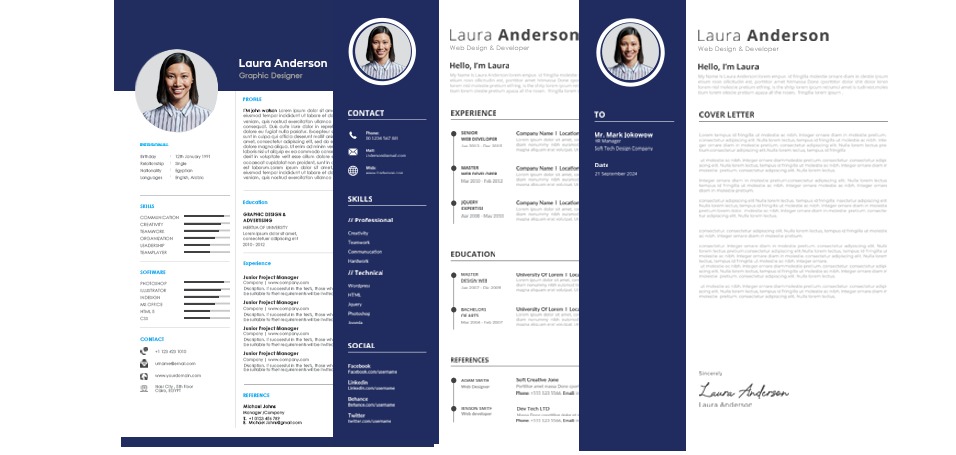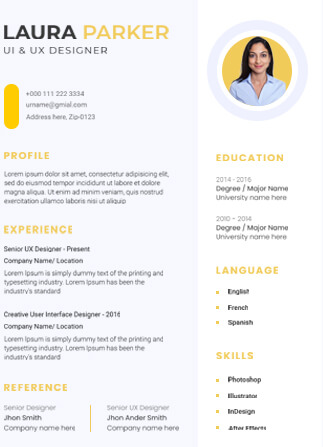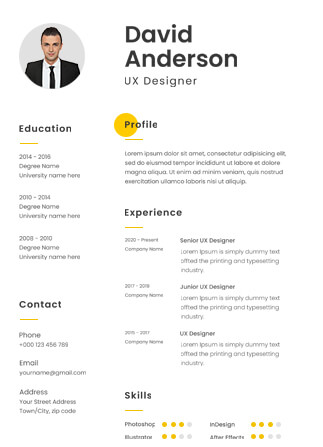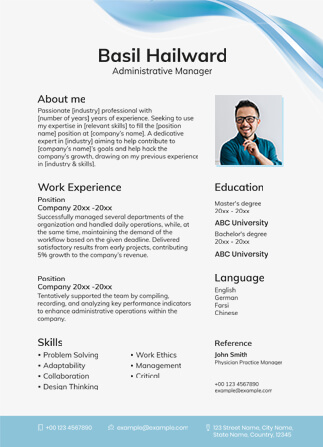Showcase your Creativity on Paper with our Graphic Designer Resume Example
Are you tired of blending in with the endless sea of cookie-cutter resumes? Stand out from the crowd and embody your unique creative flair with our graphic designer resume example. Our graphic designer’s resume examples are designed to highlight your skills and experience visually appealingly, allowing you to manifest your creativity on paper.

Get hired with Our Eye-Catching Graphic Designer Resume Examples
Getting hired as a graphic designer can be a competitive process, with many talented individuals vying for the same positions. With our eye-catching graphic designer resume examples, you can set yourself apart from the crowd and present your skills and experience compellingly and professionally.

Here is the most promising graphic designer resume-writing tutorial:
- How to get an unbeatable graphic designer resume & creative portfolio?
- How to Write a Killer Graphic Designer Resume – Flaunt Your Inventiveness?
- The Essentials of Writing an Eye-Catching Cover Letter for a Graphic Designer
- How to write your graphic designer resume, if you don’t have any experience?
Unbeatable Graphic Designer Resume & Creative Portfolio
A Minimalistic Design: A simple and clean design can deliver your creativity by leaving a lasting impact. This can be achieved by using negative space and limited colors to create an elegant and professional design.
An Illustrated Design: Use illustrations to bring your resume to life and make it stand out from the crowd. Illustrations can help to tell your story and give the employer a sense of your style.
A Creative Format: If you want to stand out, consider using a creative format for your resume. For example, you can use a timeline format to demonstrate your experience or a mind map to guide your design process.
Help with Typography: Typography makes your resume visually appealing. Experiment with different fonts and styles to create a unique look representing your brand.
Use of Infographics: Infographics are a prominent mode to communicate information in a visually appealing way. Use them to exhibit your skills, experience, and design process.
Benefit with Color: Color can draw attention to specific elements of your resume and make it pop. Use a consistent color palette to create a cohesive and professional look.

How to Write a Killer Graphic Designer Resume - Flaunt Your Inventiveness?
Start with a professional summary
Your resume should briefly summarize your background, skills, and achievements in graphic design. This section should be written confidently and provide an overview of your strengths and experience.
Emphasize your portfolio
Your portfolio is the most crucial part of your resume. Make sure it illustrates your best work and highlights your creativity and technical skills. Include a link to your online portfolio in your resume.
Focus on your experience
Highlight your experience in graphic design, including the types of projects you have worked on, the clients you have worked with, and the results you have achieved. Use bullet points and quantify your accomplishments whenever possible.
Use keywords
Include relevant keywords in your resume, such as graphic design software, typography, branding, and marketing. This will help your resume get noticed by employers and increase your chances of getting an interview.
Epitomize your design skills
Comprise pieces of your work in your portfolio, including illustrations, branding and packaging designs, and any other work that demonstrates your design skills.
Keep it visually appealing
A graphic designer’s resume should be visually appealing and informative. Employ tidied and modern design elements, typography, and graphics to make your resume stand out.
Proofread
Make sure to proofread your resume carefully for any errors or typos. A typo in your resume can negatively impact your onboarding chances.
The Essentials of Writing an Eye-Catching Cover Letter for a Graphic Designer
As a graphic designer, your cover letter is your first chance to impress employers. It is your prospect to make a great first impression and stand out from the crowd. Whether you are applying for a junior or senior graphic design position, your cover letter must be professional, well-written, and eye-catching. You can consider these points by choosing the cover letter example or editing.
- Start with a strong introduction: Begin your cover letter with a catchy opening that captures the reader’s attention.
- Customization: Address the company and hiring manager by name and tailor your letter to the specific job and company.
- Accentuate Your Skills: Emphasize relevant design skills and experiences that match the job requirements.
- Show Your Passion: Demonstrate your passion for design and explain why you have an interest in the company and the job.
- Be Distinctive: Be creative and exhibit your personality in the letter to stand out from the crowd.
What if you don't have any experience?
Experience is usually a plus, but everyone needs to start somewhere. If you’re starting or switching careers, you’ll need to develop a unique approach to emphasize any work you’ve done that is pertinent to the position you’re applying for.
Internships, fellowships, voluntary work, and occasionally employment wholly unrelated to your field are examples of this. It might be a good idea to mention your educational credentials first if you lack experience because you are still in college. It would be best if you also went above and beyond in your profile or summary to explain why you believe this is your ideal field.
Unbeatable Resume Options with Unmatchable Quality
Quick Questions
Your graphic designer resume should include your contact information, a summary or objective statement, your education, work experience, skills, and portfolio.
Your graphic designer resume should be one to two pages in length. Keep it concise and relevant to the job you are applying for.
You can use a reverse-chronological format, which first lists your most recent work experience. This format is easy to read and emphasizes your most recent and relevant experience.
Yes, it is good to include a portfolio with your graphic designer resume. A portfolio portrays your skills and abilities and can help you stand out from other applicants.
You can explain your design skills by pithily describing your design projects, highlighting your software proficiency, and including a link to your portfolio.








